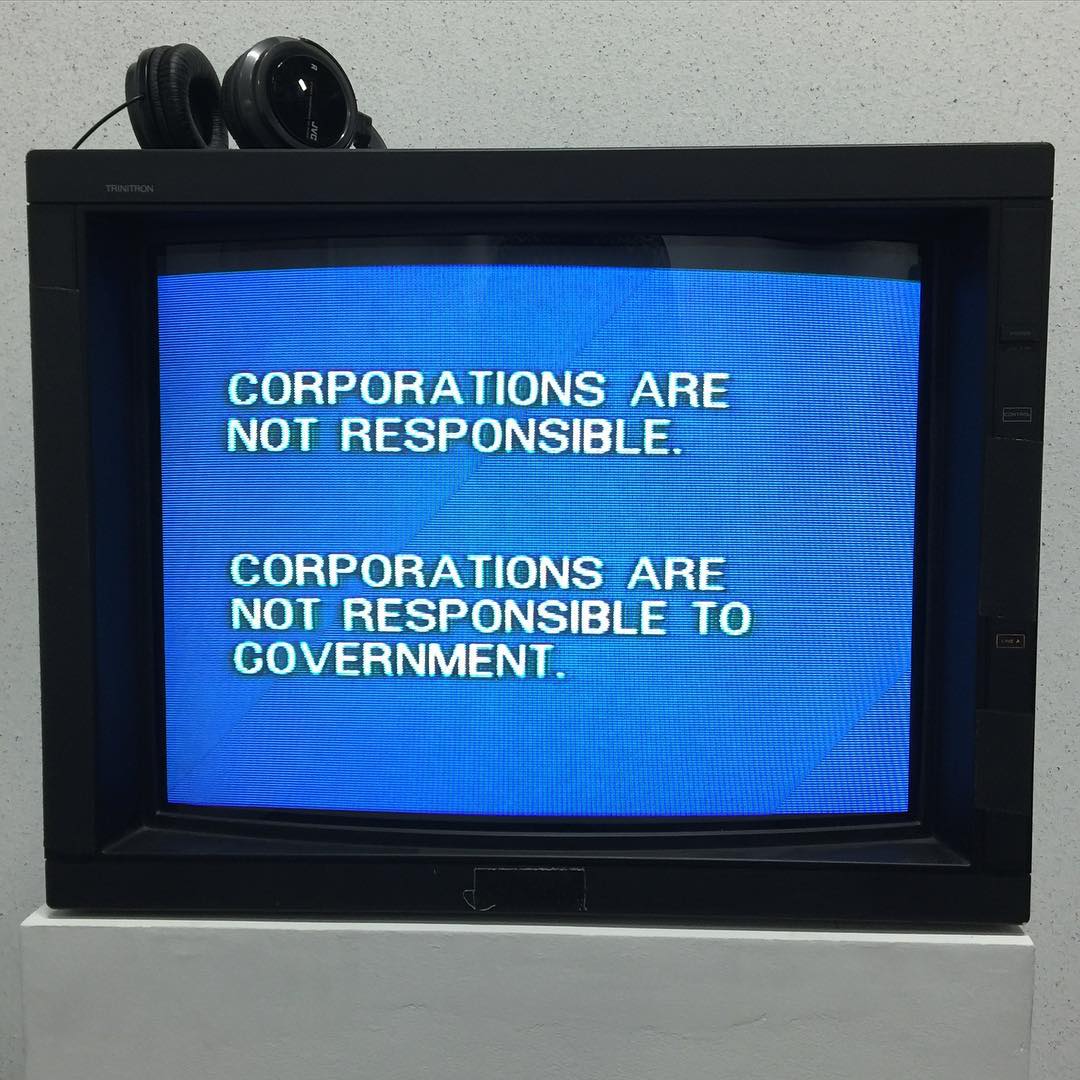
Video is about television. Television is about distribution.
Television reflects a rift between broadcasters and viewers; the corporations and the public. Those who own the channel and those who receive the channel. David Antin calls the relationship “profoundly unequal and symmetrical.” Much like the printing press, the means of television production are beyond the means of the individual. Like the classified sections in newspapers, though, television also provides an opportunity for the public to cross that rift in a limited capacity. Ironically, that bridge is commercials. You still have to have a corporation-sized budget, but anyone with enough money can buy a commercial and shift from product to customer. The fact that “user-created” media can appear within a corporate-controlled media system is powerful: it can help make users feel empowered. By working within this corporate system they can express their frustration with it.
Television is the most important development of this century. It’s the most fundamental change in media since the development of print. It has entirely changed the way we relate to media. Video is even slowly becoming the primary way we consume music. Television’s mass distribution has strengthened American brands like the Jackson 5 and Coca-Cola and allowed them to spread widely throughout the world. Through the ether of video, television flows into the home of every American, bringing information: advertisements, news, The Carol Burnett Show, and on a few occasions in 1973, Television Delivers People.
One of the many effects of television on radio has been to shift radio from an entertainment medium into a kind of nervous information system
Marshall McLuhan // Understanding Media
Video exists today purely in relation to television. David Antin writes that “for the last 20 years, commercial television has set the standard of video time.” I’d go beyond that to say it set the standard of video in general.
Richard Serra and Carlotta Fay Schoolman’s work, Television Delivers People is art about television. It consists of fifty three blocks of yellow text scrolling up a blue background. Upbeat Muzak plays throughout. It first aired on a public-access television station in Amarillo Texas earlier this year (1973) and subsequently on other broadcast stations, including here in Chicago. Because it inserts itself into the cash-money context of regularly scheduled programs, it takes on an element of the tactical media. It is a détournement, it appropriates and transforms the medium of television for its own ends. It is cybernetic guerrilla warfare.
Television Delivers People’s entrenchment within the infrastructure of commercial television provides not only mass distribution but also meaning. If you saw it on TV, the first thing you’d notice is that the work doesn’t look like commercial television. It’s aligned more closely with the more didactic forms of public access television, but it doesn’t look quite like that either. There are no cuts throughout the 6-minute length. No flashy graphics. No brands. It’s likely the only cutless 6-minute block you’ll see on TV all year. Perhaps it’s a public access message, but it doesn’t feel quite right? You continue watching, intrigued.
The video establishes the idea that you, the viewer at home, are not the customer of television, but in fact the product. The networks make their money by selling your time and attention to their advertisers. “You are the product of television.”
Television Delivers People then talks about the customer: the corporations. Because the corporations are the customers, they ultimately have control over broadcast networks in general. Their primary obligation is to commerce, which is at odds with information and entertainment. “We are persuaded daily by a corporate oligarchy.”
Television programs and adverts alike (and through them, society) are propaganda. The video asserts that, “There is a mass media compulsion to reinforce the status quo. To reinforce the distribution of power.” Of course, this is equally true of newspapers and magazines. Television Delivers People itself is an unashamed attempt to influence you and reject the status quo. The difference is that it’s upfront about it.
So stunningly upfront. “This is what an honest persuasive positional argument looks like”, you think. You start to feel bored. You realize, with horror, that it worked: an honest persuasive argument feels ‘boring’, but an insidious hidden persuasion feels ‘engaging.’ You wonder what that says about you.
Commercial television defines our expectations of video, and therefore video itself. When Television Delivers People uses the medium of television to deconstruct the condition of television, it asserts the condition of video as a medium in itself.
I believe that if you seek an understanding of video, you must begin with Television Delivers People. It is not only exemplary of the medium in its form, but it thoroughly examines the medium in its content.